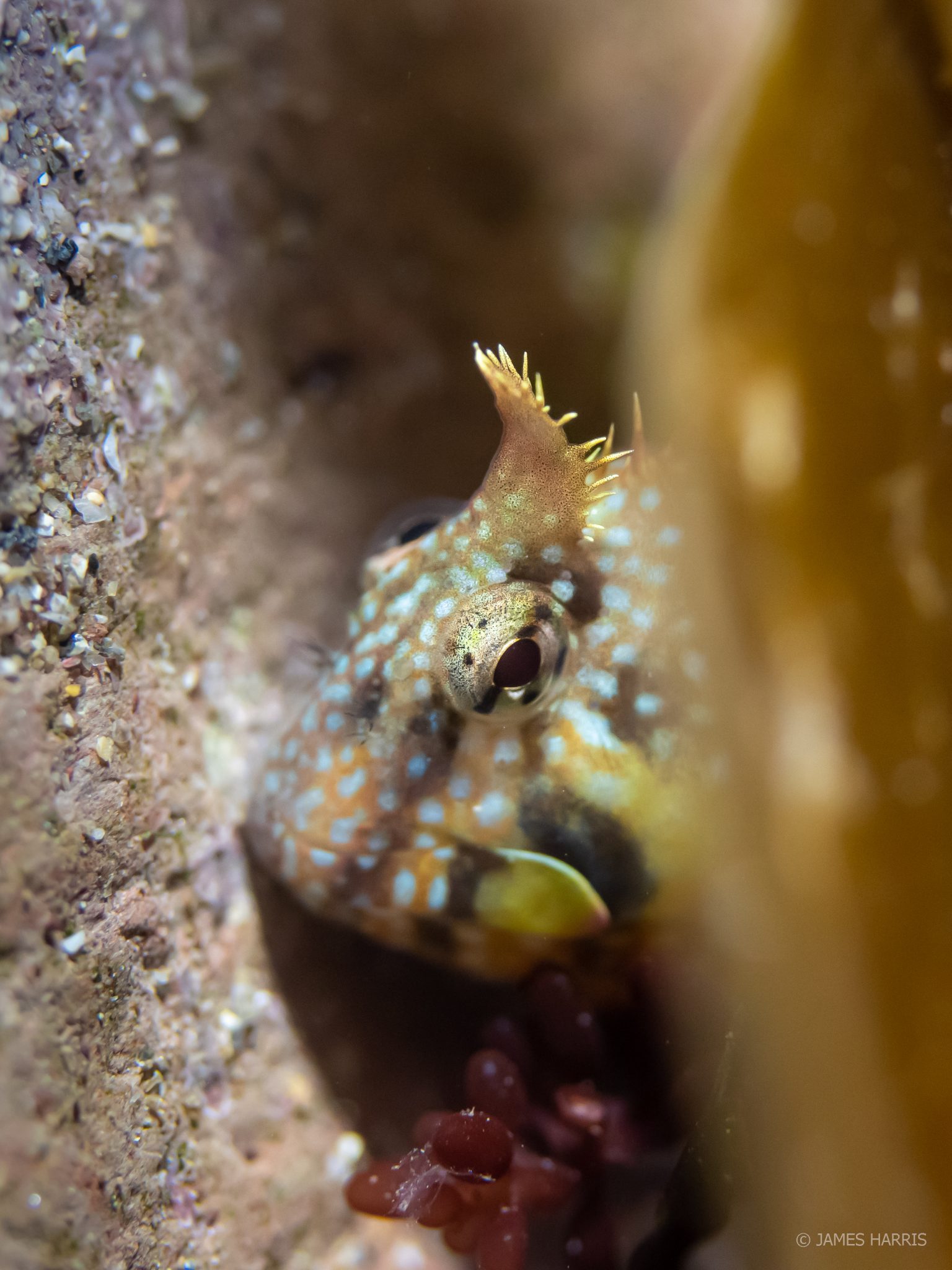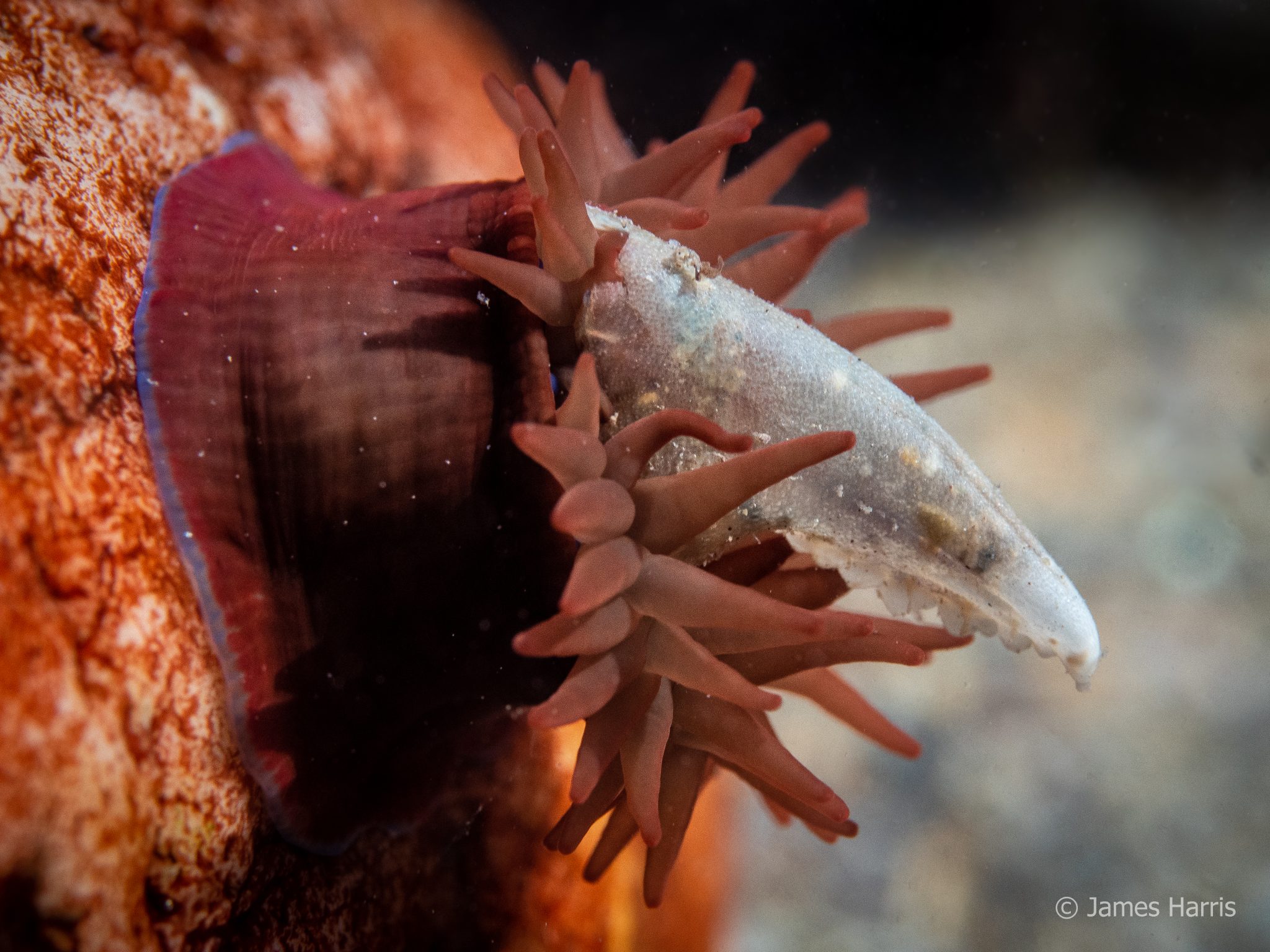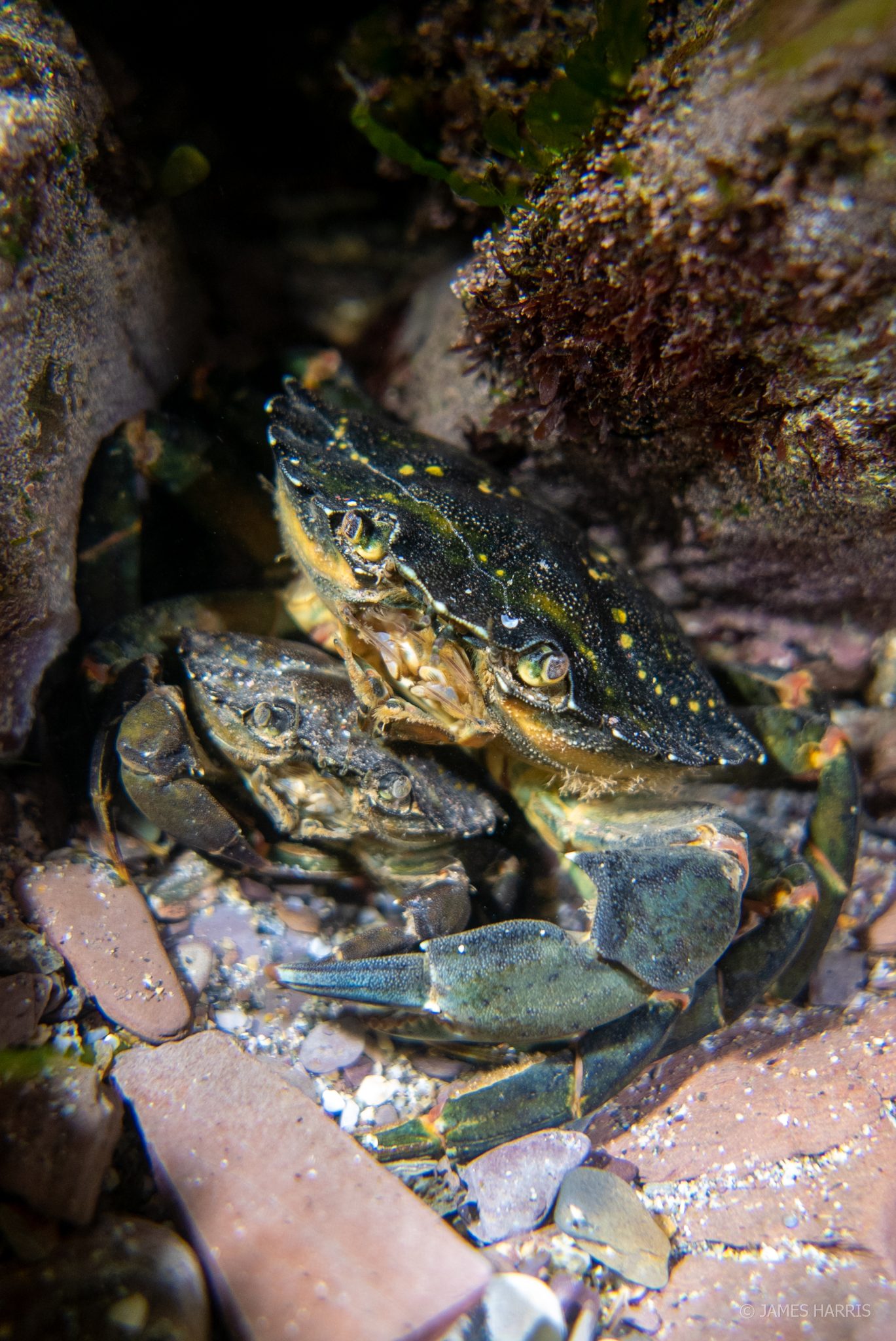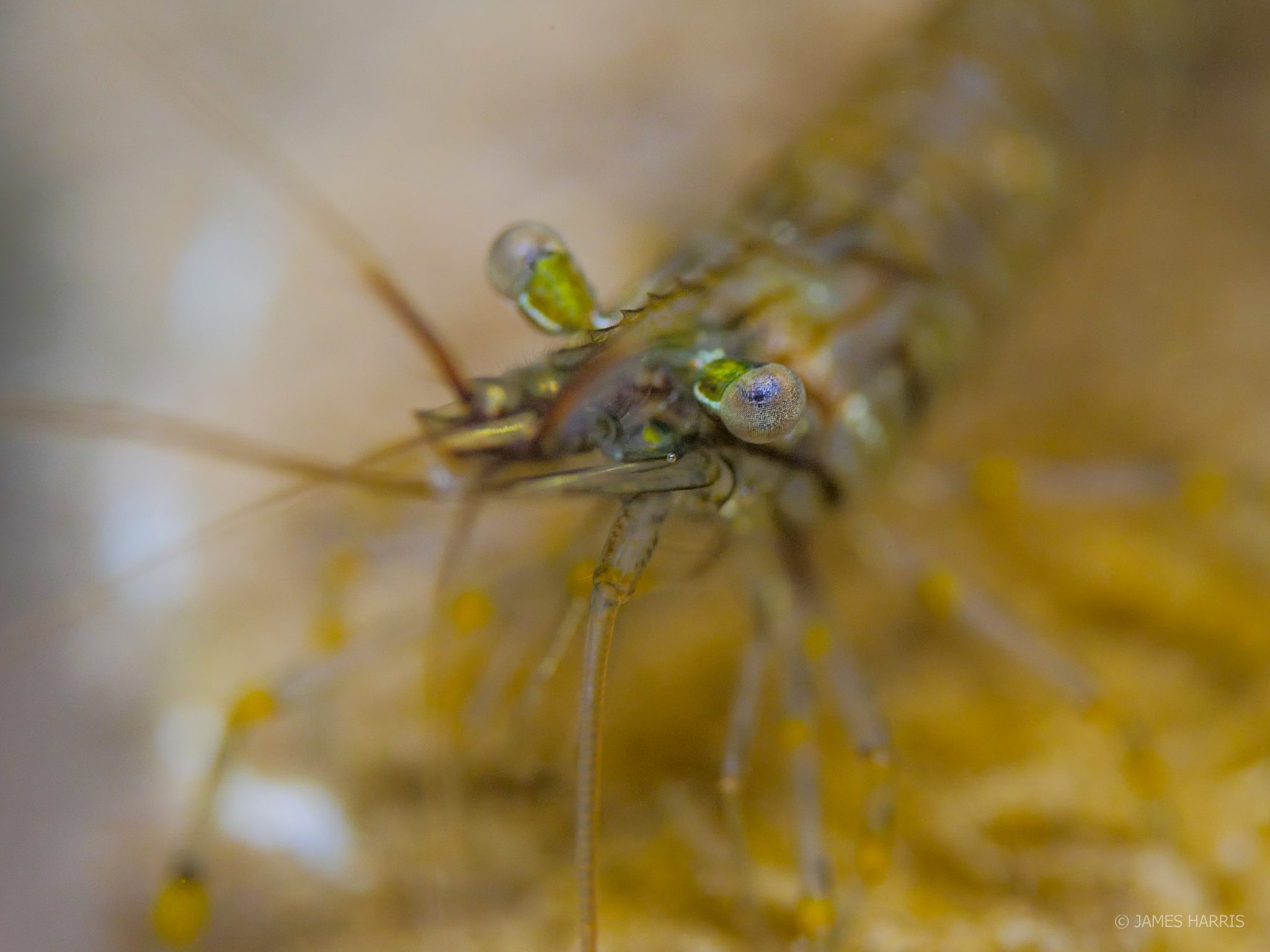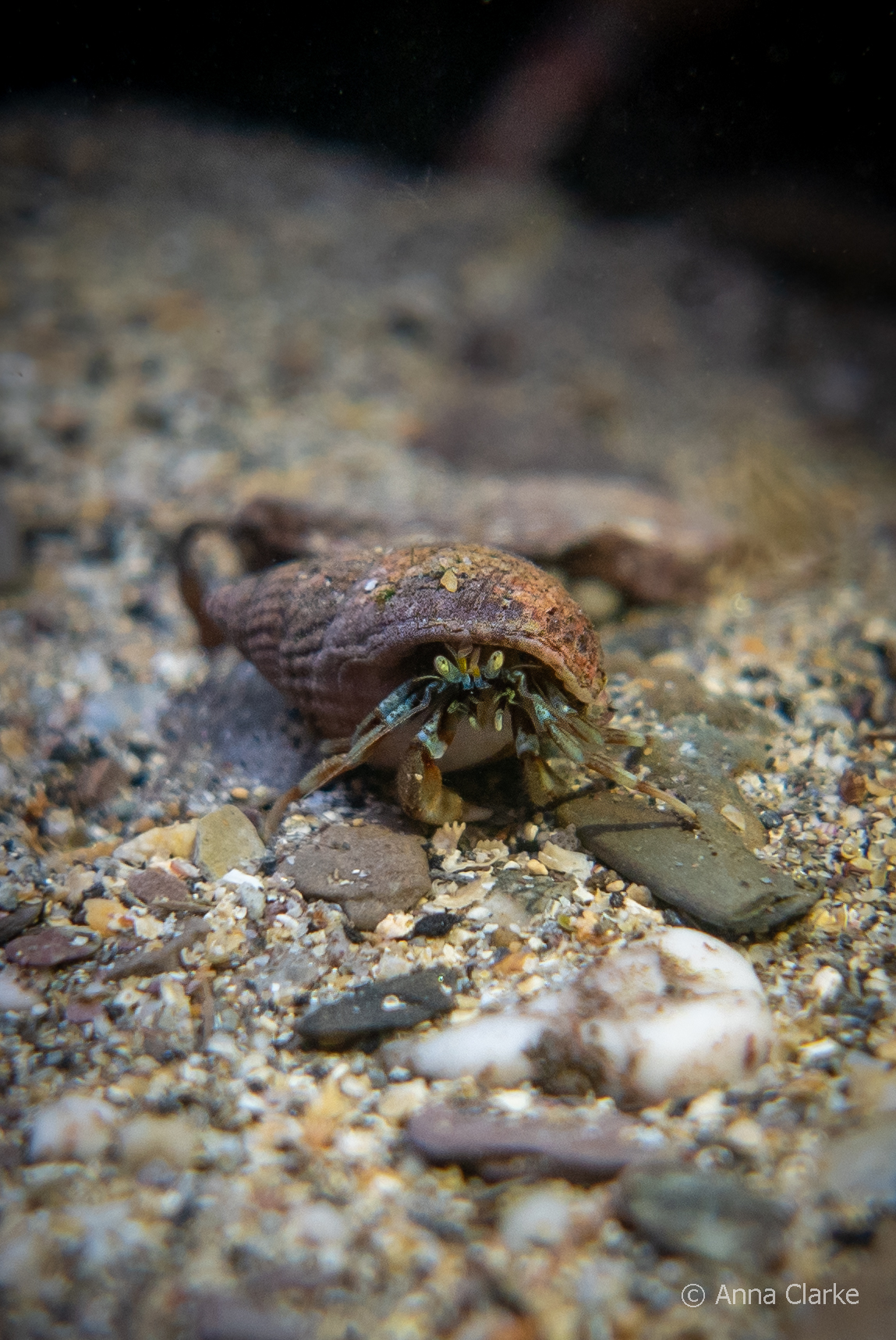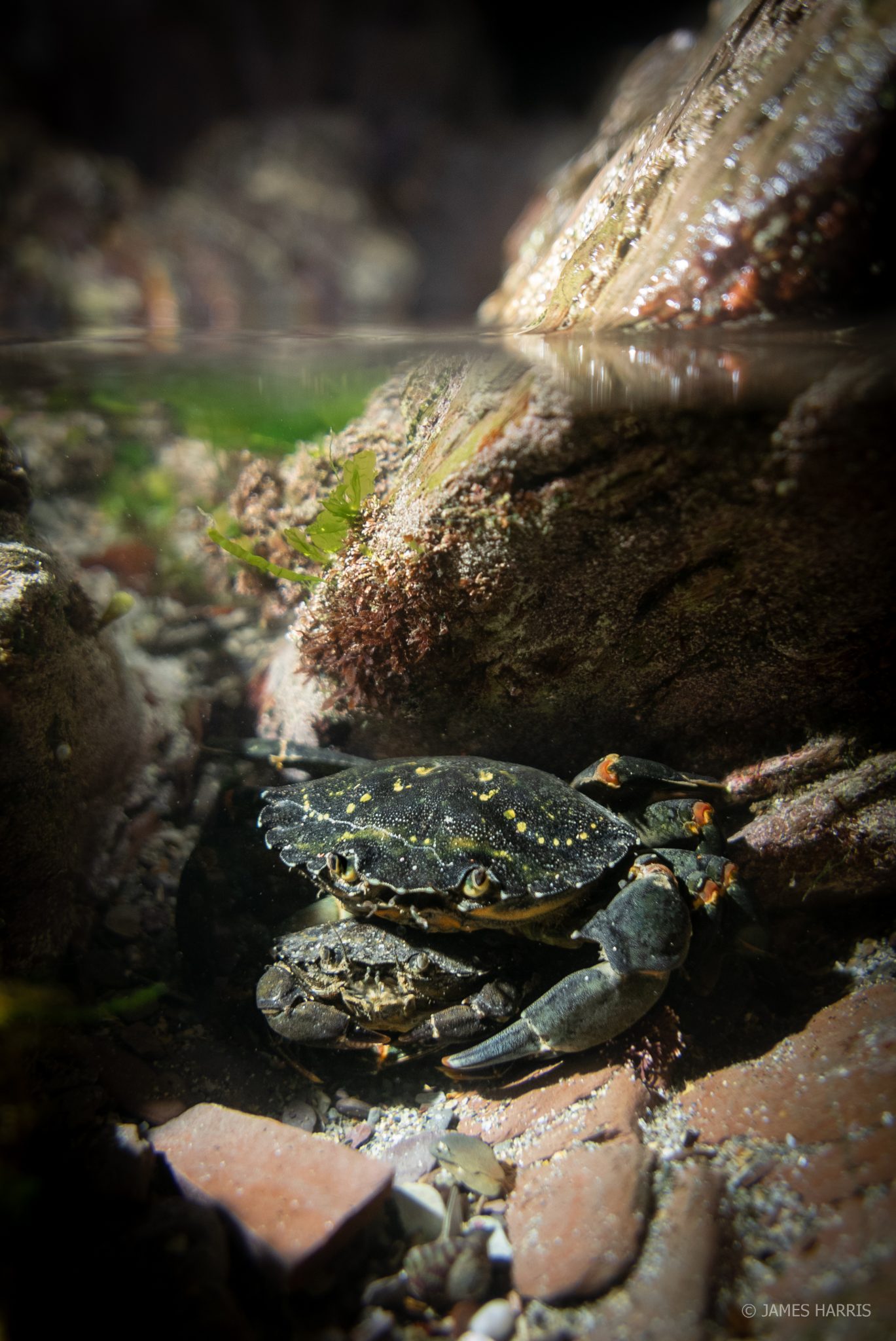News
Underwater photography – without getting wet!

First of all, let’s address the elephant in the room. The image above. It’s a starfish, and those are its spines. OK great, now that that’s out of the way, let’s talk about an underwater (just about) photography idea you might not have considered before: rockpools!
If you’re a warm water diver who enjoys a bit of underwater photography, chances are your camera gear spends more time in storage than in the water. Even us hardy UK divers often leave the camera at home when diving our local site, there’s no denying it’s another thing to worry about.
This is where rockpool photography comes into play. Don’t get me wrong, this type of underwater photography certainly brings its own challenges. Swap buoyancy control for slippery footing, gas management for incoming tides, and a foggy mask for a hidden view finder. But here’s the thing; keep your battery charged and when the mood strikes, you can be out the house in 5 minutes, driving to the beach to take some underwater pictures. Rockpool photography enables one key thing, spontaneity. And when you can be spontaneous, your expensive underwater camera is much more likely to get used!
Macro
Get comfortable – rockpools are spiky! If you can bring yourself to embrace the fashion faux pas, gardening knee pads would be a blessing. Personally, I just can’t do it, so a rolled-up jumper has to do. Getting comfortable is particularly important when it comes to the first type of shot I’m going to talk about – macro. The Tompot Blenny above was in about 20cm of water which meant the viewfinder was totally submerged. I also had a tiny depth of field because of the macro lens I was using; look at the surface of the rock on the left to see the focus go in and out. Put these things together and you can guess how many shots it took to get that front eye and head fringe sharp.
Macro in rockpools is great, it allows you to bring to life the overlooked critters hiding right under our noses. It definitely takes some time and patience though and getting comfortable makes the experience much more enjoyable.
When you think there’s nothing to see, keep looking. At first glance, most rockpools look fairly uninteresting. But in a similar way to when you look at the night sky and the stars gradually reveal themselves, the more time you spend looking in a rockpool, the more you will notice.
This Beadlet Anemone, a pretty common sight in UK rockpools, happened to be dealing with a stray claw that had recently been shed by a moulting crab. I didn’t even notice there was something unusual until I was lining up the shot, and it wasn’t until I got home and zoomed in that I realised exactly what it was.
There is more going on in most rockpools than you might think. It’s quite a departure from open water diving where you have space to take everything in, but I promise – keep looking, it’s worth it!
Capture behaviour. You can be forgiven for assuming that rockpools are quite static. They are just full of creatures waiting for a high enough tide to get back to the sea, right? Not necessarily. When I crouched down to take the shot above, I thought there was only one crab. To my surprise, I noticed that there were actually two! The larger of the pair was carrying a smaller crab underneath it, chasing away other critters as it went.
After researching the behaviour, I discovered the two crabs were in a mating embrace. When this happens, a male crab carries a female away from other males where he will guard her for up to six days. During this time, she moults her hard shell (now I think about it – perhaps it was her claw I found in the anemone above?!) in preparation to mate, leaving her vulnerable. Throughout this time, she is totally reliant on him for protection.
Observing behaviour as it unfolds and capturing it with your camera makes you feel connected to rockpools in a more meaningful way than you might be used to. Next time you’re out, watch out for interactions between creatures, you might be surprised how dynamic these habitats are!
Don’t wait for something amazing. If there’s one thing that you are almost guaranteed to see in rockpools, it’s prawns. They are generally semi-translucent, small, and not particularly interesting. But when you get very close, all sorts of colours, textures and intricate physiological features are unveiled.
The Rockpool Prawn above was only about 1.5cm in length and I only really bothered photographing it to practice with my macro lens. It wasn’t until I got home that I noticed the fascinating blue silver detail in the eyes, similar to a fly. Spiky ridges along its back, bright yellow bands and colourful green eye stems were also revealed under the scrutiny of the macro lens
This silly little creature that I generally ignored, was turning into something far more interesting. Don’t wait for something amazing, get shooting because you might be surprised how amazing the mundane is when given some close attention.
Give it a go! The image above was taken during a trip to Wembury Beach by my partner and it was her first time trying underwater photography. She was using a ten-year-old camera and managed to capture a picture as good as any I took.
This shot has such good composition and beautifully captures a moment in time. By getting down low and facing the Hermit Crab head-on, it looks like it’s posing for a portrait. The sprinkle of sand on the top of the shell and the vibrant blue colouring on the legs are the icing on the cake. I love this picture and it’s proof that you don’t have to be a pro to take a great shot. Get out there and give it a go!
Wide-angle & under/over
Put things into context. If you don’t have the equipment/eyesight for macro photography and aren’t sure how your wide-angle setup can be used in a rockpool full of tiny creatures, keep reading.
You might recognise the two Shore Crabs above from an earlier image. That earlier picture was taken using a macro lens whereas this one was an under/over image using a wide-angle lens. Wide-angle is great for this type of shot. The larger dome gives you more glass to position the water line where you want it, allowing you to capture both over and underwater worlds in one shot.
I find this type of picture great for giving some context to your images. They aren’t just random underwater scenes; they are moments in a recognisable environment.
Animals are optional. Now, despite me saying how many hidden creatures will reveal themselves if you look for long enough, those of you with a patience deficiency have another option. Rockpool landscapes are incredible varied and fascinating, particularly if you use a wide-angle lens to capture under/over pictures.
The collage above is a collection of rockpool landscapes I took one evening at Wembury Beach. You can see how different the textures and colours between rock pools within metres of each other can be. From the surface, they look fairly similar, but capturing them in this way allows you to showcase the diversity that’s hidden beneath the water’s surface.
A final thought
If you’re anything like me, one word comes to mind when you imagine taking your underwater camera into a slippery rockpool – awkward. To a certain extent it is, and honestly, it takes a bit of getting used to, but compared to scuba diving, rockpool photography is so convenient. It’s easy to dismiss, but stick with it, stay patient, follow some of the tips above, and you’ll be surprised what you can find just under the water’s surface. Get out there and give it a go and don’t forget to tag me if you post anything online, I’d love to see it!
News
Book Review: Fire on Monroe Bravo by Fred Lockwood

Fire on Monroe Bravo is the latest book in the Jack Collier series by Fred Lockwood. Our story begins with our lead characters, Jack and Sandro, owners of Marine Salvage & Investigation Company, arriving on the Monroe Bravo Oil & Gas Platform in the North Sea. Having secured a contract for their vessel the MV Stavanger to act as support ship to the platform for TransGlobal Oil, our protagonists are on a celebratory visit.
However almost as soon as they arrive a series of explosions rock the platform, causing huge damage, loss of life and the very real danger of a massive human, ecological and financial disaster.

As the danger mounts for both our heroes and the surviving workers, Jack and Sandro will have to escape the inferno, all while trying to save the platform and the men still trapped unable to help themselves.
The disaster sets the scene for the unfolding story lines following the fate of the platform and our main characters, the police investigation into a suspected terrorist act and the actions of TransGlobal Oil as they attempt to navigate the pubic outcry and financial repercussions.
In his eighth book, Fire on Monroe Bravo, Fred Lockwood delivers an explosive thriller, with plenty of above and in-water drama, and our heroes fighting for survival, what more can you ask for?
We thoroughly recommend this read and look forward to the next in the series. For more information about his book series, you can check out the reviews of his previous books here on Scubaverse.
- Title: Fire On Monroe Bravo
- Author: Fred Lockwood
- ISBN: 979-8325324536
Available in a paperback version and for Kindle from Amazon and book stores.
Blogs
Alonissos: The complete diving destination (Part 1)

In June we were incredibly fortunate to be invited to dive in Alonissos, a small Greek Island in the Sporades island chain located in the North Aegean Sea. While I have long been a big fan of the Greek Islands as a great holiday destination, I had not had the opportunity to do any diving on previous visits and Mike and I were extremely excited to see what Alonissos had to offer both above and below the surface!

The Sporades are easily accessible via the airport in Skiathos (the first island in the chain), which is served by Jet2 flights from all major UK airports from May through October. Numerous ferries and charter boats make island hopping from Skiathos Town a breeze. After an hour boat ride, the picturesque port of Patitiri was a wonderful introduction to Alonissos, where we were met by our gracious hosts Kostas of Albedo Travel and Dias of Alonissos Triton Dive Center. Mike and I were delighted to be staying at the Paradise Hotel, aptly named for its stunning views over the sea and great location for walking to the waterfront.

Alonissos is beautifully situated in the National Marine Park of Alonissos and the Northern Sporades, the largest marine protected area in Europe. The surrounding seas offer fabulous marine life, including incredibly rare species such as the Mediterranean monk seal. They boast deep walls covered in gorgonians and sponges, stunning topography with caverns, swimthroughs and pinnacles, and the first accessible ancient shipwreck from 500BC!

In locations where historical sites have been reported, the waters are largely restricted, but with collaboration between government, underwater archeologists and dive centres, incredible underwater museums are being created for a truly unique diving experience. Alonissos is home to the first of these, the Ancient Shipwreck of Peristera Accessible Underwater Archeological Site. The chance to dive into history (along with reports of healthy reef life and amazing underwater topography) meant Mike and I were keen to get in the water.

Our introduction to the diving around Alonissos was at the Agios Georgios Pinnacles, in the channel between Alonissos and Skopelos. This fantastic site was named “The Chimney,’ and proved to have a huge amount to see. We got to a decent depth here (over 25m), and marvelled at a colourful reef wall with a wonderful swim through whose rocky walls were absolutely covered with life. As well as brilliant topography there was no shortage of macro life here. We saw numerous nudibranchs, five different species in total. The second dive at Mourtias reef nearby was a shallower dive along a nice wall with lots of crevices. Several moray eels and grouper called this site home. We enjoyed looking in the crevices for lobster and smaller benthic life, such as cup corals and tunicates.

Our itinerary allowed us two dives a day with afternoons left to explore the island with our hire car and evenings to enjoy the famous Greek hospitality. This proved to be a lovely mix of in-water and land based diversions.

The next days diving to the Gorgonian Gardens and Triton’s Cave was to be even better! These two stunning sites are nothing short of fabulous. The Gorgonian Gardens was a deep wall near to the Agios Georgios islands. The ever-present currents in this deep channel meant that the sea life was amazing … the namesake Gorgonian sea fans dotted the wall at a depth of 30 to 50 meters, getting ever larger the deeper we went. Above 30m was by no means less beautiful, with sponges, corals, scorpionfish, moray eels and some rare and colourful nudibranchs.

The second shallower dive of the day was to Triton’s Cave or the Cavern of Skopelos, on the east side of that island. The spectacular rock formations had wild striations both above and below the water making a truly epic topography. The cavern entrance was at 14m, and big enough for a buddy pair, winding up to 6m and passing two beautiful windows out into the blue. Emerging from the cavern, the light at the shallower depths and the incredible rock formations made for a fantastic gentle swimming safety stop and we all surfaced by the boat with massive grins.

Check out our next blog :Alonissos: The complete diving destination (Part 2)” to hear about our amazing dive on the 2500 year old Peristera Wreck!
Thanks to:
Alonissos Triton Dive Center https://bestdivingingreece.com/
Albedo Travel https://alonissosholidays.com/activities/
Paradise Hotel https://paradise-hotel.gr/
Alonissos Municipality https://alonissos.gr/en/
-

 Blogs2 months ago
Blogs2 months agoDiving With… Nico, Ocean Earth Travels, Indonesia
-

 News1 month ago
News1 month agoMurex Bangka Announce New Oceanfront Cottages & Beachfront Dining
-

 Blogs2 months ago
Blogs2 months agoA new idea in freediving from RAID
-

 Marine Life & Conservation1 month ago
Marine Life & Conservation1 month agoIceland issue millionaire whale hunter a licence to murder 128 vulnerable fin whales
-

 Marine Life & Conservation2 months ago
Marine Life & Conservation2 months agoThe Shark Trust Great Shark Snapshot is back
-

 News3 months ago
News3 months agoCharting New Waters; NovoScuba Goes Global with the Launch of their Revolutionary Dive Training Agency!
-

 Gear News1 month ago
Gear News1 month agoNew Suunto Ocean – a dive computer and GPS sports watch in one for adventures below and above the surface
-

 Marine Life & Conservation Blogs2 months ago
Marine Life & Conservation Blogs2 months agoBook Review: Plankton


